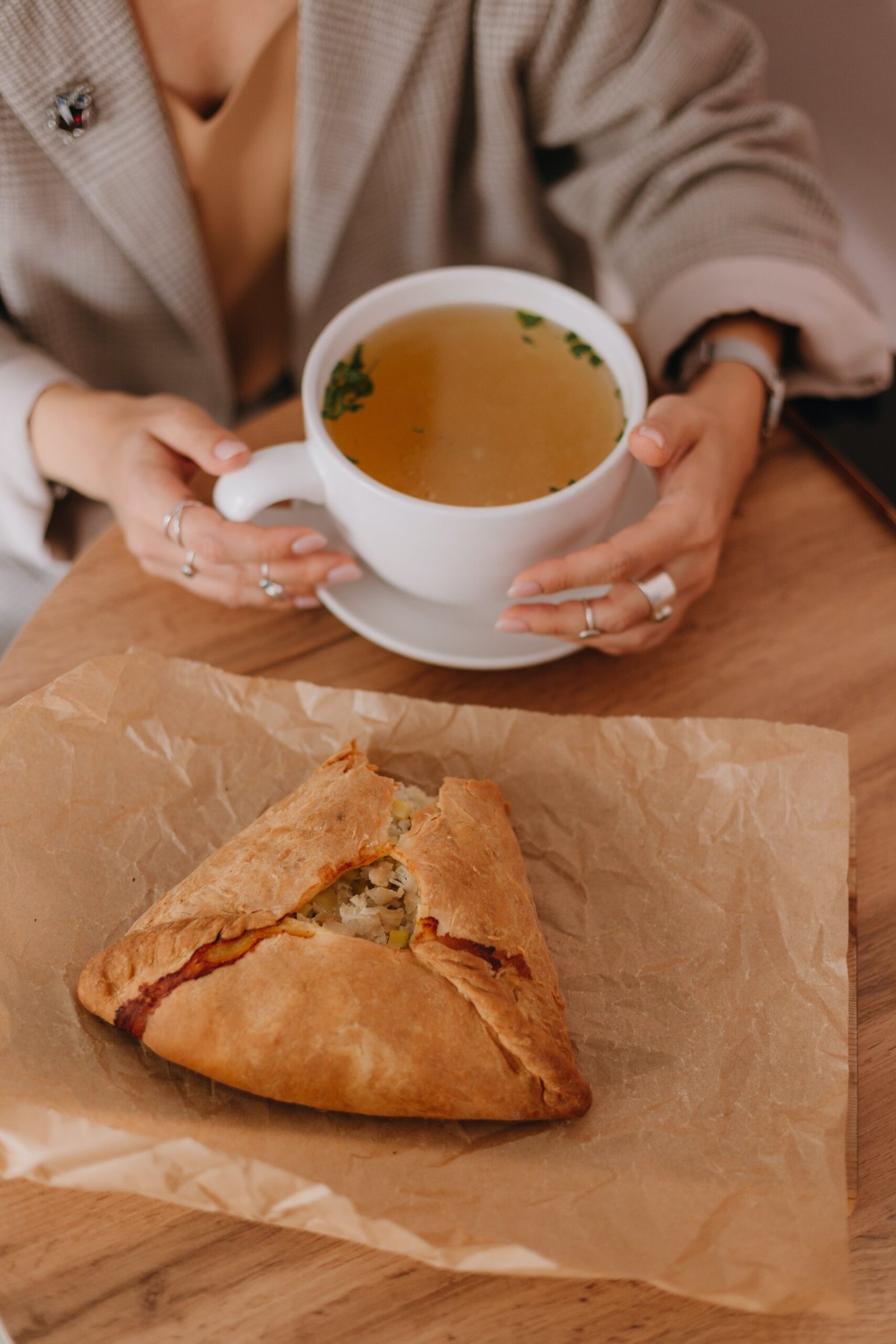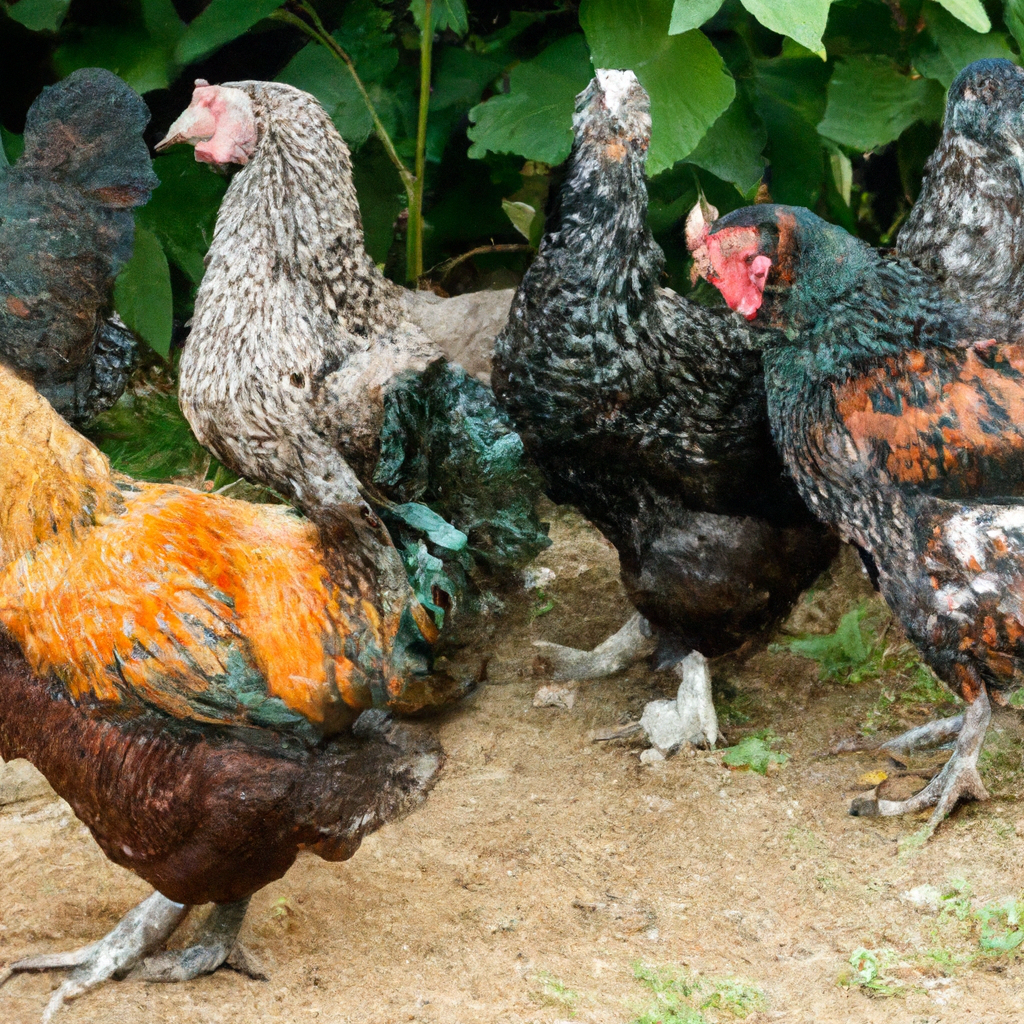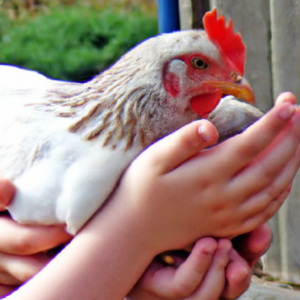
Imagine having a colorful and diverse flock of chickens in your backyard, each breed displaying its unique patterns and characteristics. But before jumping into this exciting endeavor, you may wonder if it’s possible to keep different chicken breeds together in the same flock. Well, the answer is yes, it’s absolutely doable! While there are some important factors to consider, such as temperament, size, and breed compatibility, with the right approach and careful integration, your mixed flock can thrive harmoniously, creating a lively and vibrant ecosystem in your poultry paradise.

Factors to Consider When Mixing Chicken Breeds
When it comes to mixing chicken breeds in the same flock, there are several factors to consider. These factors will help ensure a harmonious and successful integration of different breeds. By taking into account the temperament, size, feeding habits, egg laying capabilities, and disease resistance of each breed, you can create a balanced and thriving chicken community.
Temperament
One of the first factors to consider when mixing chicken breeds is their temperament. Some breeds are naturally more docile and friendly, while others can be more aggressive or standoffish. It’s important to choose breeds that have a similar temperamental disposition to avoid conflicts and unnecessary stress within the flock. By doing so, you’ll create a peaceful and cooperative atmosphere where all the chickens can thrive.
Size
Size is another important consideration when mixing chicken breeds. Different breeds can vary significantly in terms of their size. While it’s possible for chickens of different sizes to coexist, it’s essential to provide enough space and resources to accommodate their varying needs. Crowding can lead to aggression and an imbalance in the pecking order, so ensure that your coop and outdoor space are adequate for all the different-sized chickens.
Feeding Habits
Each chicken breed may have different feeding habits and preferences. Some breeds may be more voracious eaters, while others may be more selective. Understanding the feeding habits of each breed will help you determine the appropriate feeding schedule and ensure that all chickens have access to their preferred food sources. This will prevent competition and minimize the chances of food-related conflicts in the flock.
Egg Laying
If you’re keeping chickens primarily for their eggs, you’ll want to consider the egg-laying capabilities of different breeds. Some breeds are known for their excellent egg-laying abilities, producing large quantities of eggs throughout the year. Others may be less prolific layers but lay eggs with unique sizes, colors, or patterns. By mixing breeds with different egg-laying traits, you can enjoy a diverse and visually appealing collection of eggs.
Disease Resistance
Disease resistance is a crucial factor to consider when mixing chicken breeds. Some breeds have a natural resistance to certain diseases, while others may be more susceptible. By incorporating breeds with varying disease resistances, you can strengthen the overall health of your flock and reduce the risk of widespread illnesses. Additionally, mixing breeds can help prevent the spread of diseases within the flock, as some breeds may act as natural barriers or buffers.
Types of Chicken Breeds That Can Coexist
Now that we’ve explored the factors to consider when mixing chicken breeds, let’s delve into the types of breeds that can coexist harmoniously in the same flock. While it’s essential to assess the specific needs and compatibility of each breed, there are several types of breeds that generally blend well together.
Dual-Purpose Breeds
Dual-purpose breeds are an excellent choice for mixed flocks because they are bred for both meat and egg production. They typically have a docile temperament and can coexist peacefully with other breeds. Dual-purpose breeds, such as Rhode Island Reds, Sussex, or Plymouth Rocks, also tend to be hardy and disease-resistant, making them a great addition to any flock.
Cold-Hardy Breeds
For those living in colder climates, adding cold-hardy breeds to your flock can ensure the overall well-being of the entire flock. These breeds, such as Orpingtons, Wyandottes, or Australorps, are accustomed to cold temperatures and can withstand harsh weather conditions. Their adaptability makes them resilient companions for other breeds, creating a diverse flock that can thrive in varying climates.
Docile Breeds
Mixing docile breeds is an ideal choice for those looking to maintain a peaceful and stress-free flock. These breeds, including Cochins, Silkies, or Brahmas, are known for their calm and friendly nature. Their gentle temperament makes them less likely to engage in aggressive behavior, reducing the chances of conflicts and promoting a harmonious coexistence with other breeds.
Egg-laying Breeds
If your primary goal is to have a flock that produces a steady supply of eggs, then mixing egg-laying breeds is a great option. Breeds such as Leghorns, Australorps, or Easter Eggers are renowned for their egg-laying capabilities. By combining different breeds that excel in egg production, you can enjoy a continuous supply of diverse eggs, from white to brown shells and even unique colors like blue or green.

Techniques for Introducing New Chicken Breeds
Introducing new chicken breeds to an existing flock should be done carefully and strategically to minimize stress and conflicts. By following these techniques, you can ensure a smooth transition and successful integration.
Quarantine
Before introducing any new chickens to your existing flock, it is essential to quarantine them. Quarantine serves as a precautionary measure to monitor for any signs of disease or illness that the new chickens may be carrying. By isolating them for a few weeks, you can prevent potential disease transmission to the rest of the flock. This practice helps safeguard the health and well-being of your entire chicken community.
Gradual Introduction
The gradual introduction of new chicken breeds is a crucial step in minimizing stress and potential conflicts. This process involves allowing the existing flock and the new chickens to gradually become familiar with each other without direct contact. By using a physical barrier, such as a wire mesh, you can create a safe and controlled environment for the chickens to interact through observation and limited proximity. This gradual exposure helps establish acceptance and familiarity, reducing the chances of aggression when they are eventually integrated into the same space.
Supervised Integration
Supervised integration is the final step in introducing new chicken breeds to the existing flock. Once the chickens have become acquainted through the gradual introduction process, it’s time to allow direct contact under supervision. Being present during the initial integration provides the opportunity to discourage any aggressive behaviors or intervene if necessary. This controlled environment allows the chickens to establish their pecking order and social hierarchy in a safe and monitored manner.
Coop Design for Different Chicken Breeds
Designing a coop that caters to the needs of different chicken breeds is vital for their overall well-being and comfort. Here are some considerations when creating a coop for a mixed flock.
Space Requirements
Providing sufficient space is crucial when keeping different chicken breeds together. Each breed has its own specific space requirements, taking into account their size and activity levels. To avoid overcrowding and minimize conflicts, it’s important to calculate the appropriate square footage per chicken and ensure adequate space for them to move around comfortably.
Roosting Arrangements
Roosting is an essential aspect of a chicken’s daily routine, and having appropriate roosting arrangements ensures their comfort and safety. Different breeds may have varying preferences for roosting heights and materials. Some breeds may prefer higher roosts, while others may feel more secure on lower levels. Designing the coop with multiple roosting options and varying heights will cater to the individual preferences of different breeds.
Nesting Boxes
Providing suitable nesting boxes for egg-laying breeds is crucial to encourage the desired egg-laying behavior. The number and size of nesting boxes should be adequate for the number of hens in the flock. Including multiple nesting boxes will help prevent crowding and reduce the likelihood of conflicts over limited nesting space. Additionally, ensuring that the nesting boxes are easily accessible and comfortable will encourage the hens to lay their eggs within the designated areas.
Feeding Stations
When designing a coop for different chicken breeds, it’s important to incorporate sufficient feeding stations. Each breed may have their own preferences when it comes to feeding habits, and providing multiple feeding stations will prevent overcrowding and potential aggression during meal times. By ensuring equal access to food and water for all the chickens, you’ll promote a peaceful and balanced feeding environment.

Common Challenges of Keeping Different Chicken Breeds Together
While mixing chicken breeds in the same flock can be rewarding, it also presents several challenges that chicken keepers need to be aware of. By understanding and addressing these challenges, you can create a harmonious and thriving chicken community.
Aggression and Pecking Order
One common challenge when introducing different chicken breeds is aggression and the establishment of a pecking order. Chickens have a natural instinct to establish a hierarchy within the flock, which can lead to aggressive behavior as they determine their place in the pecking order. The introduction of new breeds can disrupt the established hierarchy, resulting in conflicts and potential harm to the chickens. It is essential to closely monitor the flock during integration and intervene if aggression becomes excessive or harmful.
Bullying and Feather Picking
Integrating new chicken breeds can also lead to bullying and feather picking. Some chickens may exhibit aggressive behavior towards others, targeting their feathers and pecking at them. This behavior can be distressing for the affected chickens and may lead to injuries or feather loss. By closely monitoring the flock and providing an enriched environment with plenty of space and distractions, you can help prevent bullying and minimize the chances of feather picking.
Inadequate Food and Water Access
Another challenge of keeping different chicken breeds together is ensuring that all chickens have adequate access to food and water. Some breeds may be more assertive and dominant, which can result in the exclusion of other chickens from essential resources. This inequality can lead to malnutrition, dehydration, and overall poor health. By having multiple feeding and watering stations and monitoring their usage, you can ensure that all the chickens have equal opportunities to nourish themselves.
Disease Transmission
Mixing different chicken breeds can increase the risk of disease transmission within the flock. Some breeds may have higher resistance or immunity to certain diseases, while others may be more susceptible. It’s important to implement biosecurity measures, such as proper cleaning and disinfection protocols, to reduce the chances of disease transmission. Regularly monitoring the health of the flock and addressing any signs of illness promptly will help maintain the overall well-being of all the chickens.
Tips for Successfully Keeping Different Chicken Breeds Together
To ensure the successful coexistence of different chicken breeds, here are some tips to keep in mind:
Provide Sufficient Space
One of the key factors in maintaining harmony within a mixed chicken flock is providing sufficient space. Overcrowding can lead to stress, aggression, and territorial disputes. By ensuring that the coop and outdoor space are adequately sized for the number and size of chickens in the flock, you’ll create an environment that promotes comfort and reduces the likelihood of conflicts.
Monitor Behavioral Interactions
Regularly monitoring the behavioral interactions within the flock is essential for identifying any signs of aggression, bullying, or other problematic behaviors. By being observant and responsive, you can intervene if necessary and prevent conflicts from escalating. Understanding the dynamics of your flock will enable you to address any issues promptly and promote a peaceful coexistence.
Ensure Adequate Resources
Providing sufficient resources, such as food, water, nesting boxes, and roosting areas, is crucial for the well-being of all the chickens in a mixed flock. Ensure that all chickens have equal access to these resources, minimizing the risk of competition and aggression. Regularly check and replenish supplies to meet the needs of the entire flock and maintain a balanced environment.
Separate the Aggressive Chickens
If you notice persistent aggression or bullying from certain breeds or individual chickens, it may be necessary to separate them from the rest of the flock temporarily. Removing or isolating the aggressive chickens allows the rest of the flock to regain peace and balance. This separation can also provide an opportunity to reevaluate their behavior and consider alternative integration methods, if appropriate.

Benefits of Keeping Various Chicken Breeds Together
Keeping different chicken breeds together in a mixed flock offers several benefits beyond their individual contributions. Here are some advantages to consider:
Diverse Egg Colors and Sizes
Mixing different chicken breeds can result in a beautiful variety of egg colors and sizes. Each breed has its own unique egg characteristics, ranging from white to brown, and even blue or green. By keeping a diverse flock, you can enjoy a visually appealing collection of eggs that will add a touch of novelty to your daily egg gathering.
Enhanced Disease Resistance
Incorporating different chicken breeds with varying disease resistances can strengthen the overall health of your flock. Some breeds may possess natural resistance to certain diseases, providing a level of protection against widespread illnesses. By mixing breeds, you can create a more resilient flock that is better equipped to resist and combat diseases, reducing the risk of outbreaks and preserving the well-being of all the chickens.
Improved Broodiness
The broodiness instinct, which is a hen’s desire to hatch and raise chicks, varies among different chicken breeds. By mixing breeds, you can utilize the broodiness tendencies of certain breeds to your advantage. A broody hen can hatch and care for eggs from other breeds, allowing you to expand your flock naturally and sustainably.
Greater Genetic Variability
Breeding chickens from different breeds can result in increased genetic variability, which has its own advantages. Greater genetic diversity promotes stronger overall health and vitality, reducing the risk of genetic disorders and weaknesses. By mixing breeds, you can create a more resilient and robust flock that thrives in various environmental conditions.
Conclusion
In conclusion, keeping different chicken breeds together in the same flock can be a rewarding and enriching experience. By considering factors such as temperament, size, feeding habits, egg laying capabilities, and disease resistance, you can create a harmonious and balanced chicken community. Incorporating dual-purpose breeds, cold-hardy breeds, docile breeds, and egg-laying breeds can contribute to a diverse and resilient flock. By following techniques such as quarantine, gradual introduction, and supervised integration, you can ensure a smooth transition and successful integration of new chicken breeds. Designing a coop that fulfills the space, roosting, nesting, and feeding requirements of different breeds is vital for their overall well-being. Despite the challenges that may arise, such as aggression, bullying, inadequate resource access, and disease transmission, closely monitoring the flock and implementing appropriate measures will help maintain a peaceful and thriving chicken community. Finally, the benefits of keeping various chicken breeds together, such as diverse eggs, enhanced disease resistance, improved broodiness, and greater genetic variability, make a mixed flock an attractive option for chicken keepers. So go ahead and mix those breeds, and enjoy the beauty, variety, and camaraderie of your diverse chicken community.







